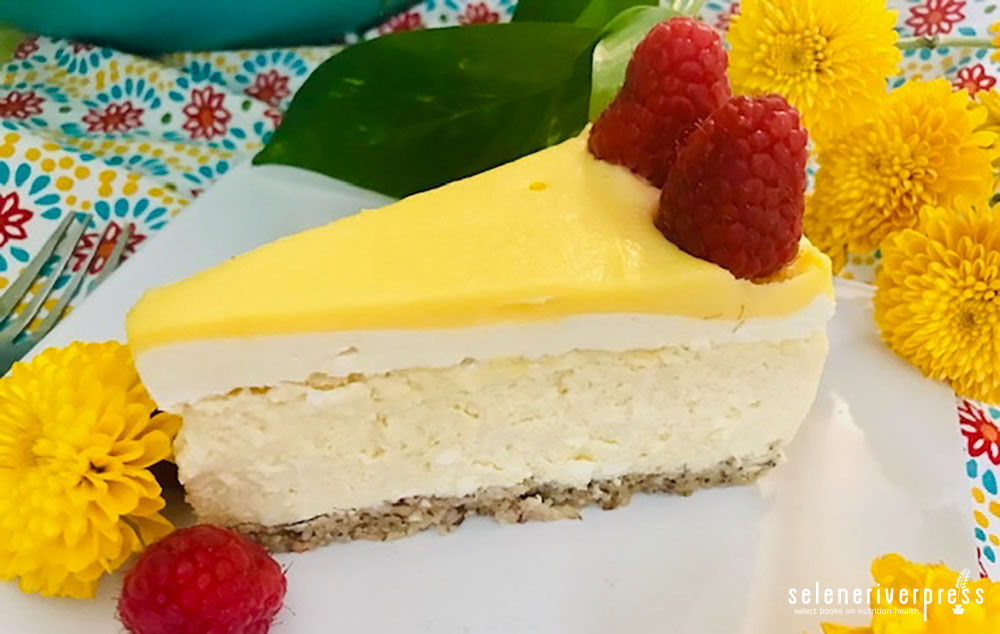I’ve written many times about my years as a pastry chef, my first dip into the professional culinary world, and how those years molded the chef I am today. This was an incredibly formative time, provoking in me a profound love of food in general, and allowing me an ideal outlet to feed both my budding creativity and my appetite for knowledge. My analytical brain thrived on the strict rules of chemical reactions found in baking, and the artist in me was able to let my imagination run free, whimsically unrestrained, when decorating cakes and preparing bite-sized treats for the display case. And, though I don’t take part in eating sugar the way I used to, I still have a deep love and appreciation for the sweet and special indulgences of my past.
Desserts, pastries, and other “treats” contrive a particular sense of pleasure for the people enjoying them—a delight distinct from eating other types of food. We know some of these feelings stem from neurotransmitters feeding our dopamine receptors, not to mention the sugar demon that lurks inside all of us, but I also think a lot of it is simply the thrill we find in treating ourselves to especially sinful extravagances.
Because I enjoy treating myself, I am always looking for ways to revamp my favorite treats, to satisfy those longings for sweet indulgences without feeding my sugar demon (and subsequently making me feel sub-par, health-wise). Simple substitutions of natural sweeteners, like honey, for refined sugars, is a great first step towards a healthier option. Furthermore, by reducing said sweeteners as much as can be, without affecting the final product too profoundly, the health benefits increase even more. Finally, incorporating alternative sweeteners like inositol, monk fruit, or stevia—which don’t affect our bodies like sugars (including natural ones) do—is about as close as one can get to an ultimate balance of feel-good meets sinful dessert.
Sometimes I believe the primary reason the universe directed me towards cakes and pastries, way back in the day, was specifically so I could use that baking chemistry knowledge to produce healthier options, that actually still taste sinful, today.
Cheesecake was always my specialty in those days. Or, at least, that’s what cheesecake aficionados would tell me. I’m not going to lie; it was good, but really, I didn’t do anything too outlandish to make it so. My secret lay in a small, yet obviously impactful, detail: a second layer baked atop the cheesecake, consisting of nothing more than sour cream, sugar, and vanilla. This “secret” gave my cheesecakes additional creaminess, helped cut through the heaviness of traditional New York style, and, perhaps best of all, covered any cracks that occurred in the lower layer while baking.
Here, I’ve given my secret recipe a bit of a makeover by eliminating the refined sugar of the past. I used inositol and stevia with great success; it gave the cheesecake a solid sweetness, without affecting the texture or taste, or overwhelming with saccharinity. Plus, it allowed me to keep the pale color of the cheesecake batter. Honey or another sugar alternative would work, too, just keep in mind that a dark sweetener, such as coconut sugar, will affect the color of your final product.
Sweet things bring happy smiles, and few treats are sunnier than the cheerful flavors of lemon. In an ode to the upcoming holiday weekend, which I always define as the official start of summer, I’ve topped this cheesecake with an intensely flavored, tart, creamy lemon curd. A perfect finish to any BBQ or summer meal, the brightness of the citrus adds a splash of fresh flavor, and the different layers look so pretty when the cake is cut.
For an extra burst of flavor, add citrus zest (lemon, lime, orange, or grapefruit, alone or in combination) to the cheesecake batter itself. You could do the same for the curd as well, changing out or combining different fruits, should you find yourself craving different citrus notes. Any leftover curd can be saved to swirl into to yogurt, dollop on scones, spoon atop ice cream, ladle into a glass with whipped cream and fresh fruit, or simply eat from the jar with a spoon (as I found myself doing).
Lemon Curd Cheesecake
Makes 1 9-inch cheesecake
Prep time: 30 minutes
Cook time: 1½ hours
Chilling time: at least 4 hours or overnight
Special equipment: 9 inch springform pan, parchment paper, 9+ inch cake board
Lemon Curd
Makes about 1½ cups
½ cup butter
¾ cup inositol (or ½ cup honey or other alternative sweetener of choice)
⅛ teaspoon stevia (or to taste), if using inositol
½ cup fresh-squeezed lemon juice
⅓ cup grated lemon zest
6 large egg yolks
Cheesecake
Crust
2 cups ground hazelnuts
¼ cup almond meal
1/2 cup melted butter
Pinch stevia or other sweetener, to taste – optional
Layer One
24 ounces cream cheese, softened
1 ½ cups inositol, or 1 cup honey or other alternative sweetener of choice
2 tablespoons lemon juice
1 tablespoon lemon zest – optional
2 teaspoons vanilla
6 eggs
Layer Two
2 cups sour cream
1 teaspoon vanilla
6 tablespoons inositol, plus 1 pinch stevia. Alternately use 4 tablespoons honey
Method
Prepare curd:
- Melt butter in a small pot on stovetop. Add all other ingredients and whisk to combine. Cook over low heat, stirring frequently, until it is thickened and will coat the back of a spoon, about 10-15 minutes. Be careful not to let it get too hot, or the eggs could curdle. If desired, you may cook in a double boiler for added protection.
- Strain thickened curd through a fine-mesh strainer into a separate bowl. Mixture will thicken more upon cooling. Cool curd by placing bowl within a separate bowl or sink filled with ice water, whisking occasionally, then transfer to a small jar. Curd keeps for about 2 weeks.
Prepare cheesecake:
- Preheat the oven to 350°F. Cut a parchment paper circle to fit the base of your pan, as well as 2 or 3 strips to line the sides. Grease the bottom and sides of your pan with melted butter, then line with parchment paper. Set aside.
- Combine ground hazelnuts, almond meal, melted butter, and optional sweetener in a small bowl. Press into bottom and partway up sides of prepared pan. Bake crust for 15 minutes on the center rack of the oven. Cool slightly before adding cheesecake filling.
- Meanwhile, using the paddle attachment, combine cream cheese and inositol (or other sweetener) in the bowl of a stand mixer, or use a hand-held electric mixer. Scrape down sides and bottom of bowl, then switch to the whisk attachment. Add eggs one at a time, mixing between each addition. Add vanilla, lemon juice, and zest if using. Scrape bowl occasionally with a rubber spatula, mixing until eggs are completely incorporated. Pour filling into prebaked crust.
- Bake at 350°F in center of oven about 45-55 minutes, until puffed with still a little jiggle in the center; a toothpick will come out clean (but moist). Remove from oven and cool on a rack for 10-20 minutes.
- Prepare top layer: Whisk together sour cream, inositol, and vanilla in a large bowl. Carefully spoon atop cheesecake (be careful not to pile it all into the center or it could sink into the lower layer) and smooth out with a knife or spatula.
- Return to the oven for 10 minutes. Remove from oven, cool on rack to room temperature, then transfer cake, in the pan, to the fridge to chill for at least 4 hours, preferably overnight.
Finish cheesecake:
- Remove cheesecake from pan, remove parchment paper, and slide cake onto a cake board, between the parchment paper and crust. (If you have trouble sliding the bottom parchment off, you can wrap top of cake in plastic wrap, then invert cake onto a board or plate, to remove paper. Then carefully flip back onto serving platter or cake board.)
- Spread a thick layer of lemon curd over top of cheesecake and arrange fresh fruit or berries around the edge, if desired.
- Serve chilled, cut with a clean, hot knife.
Image from Briana Goodall.


